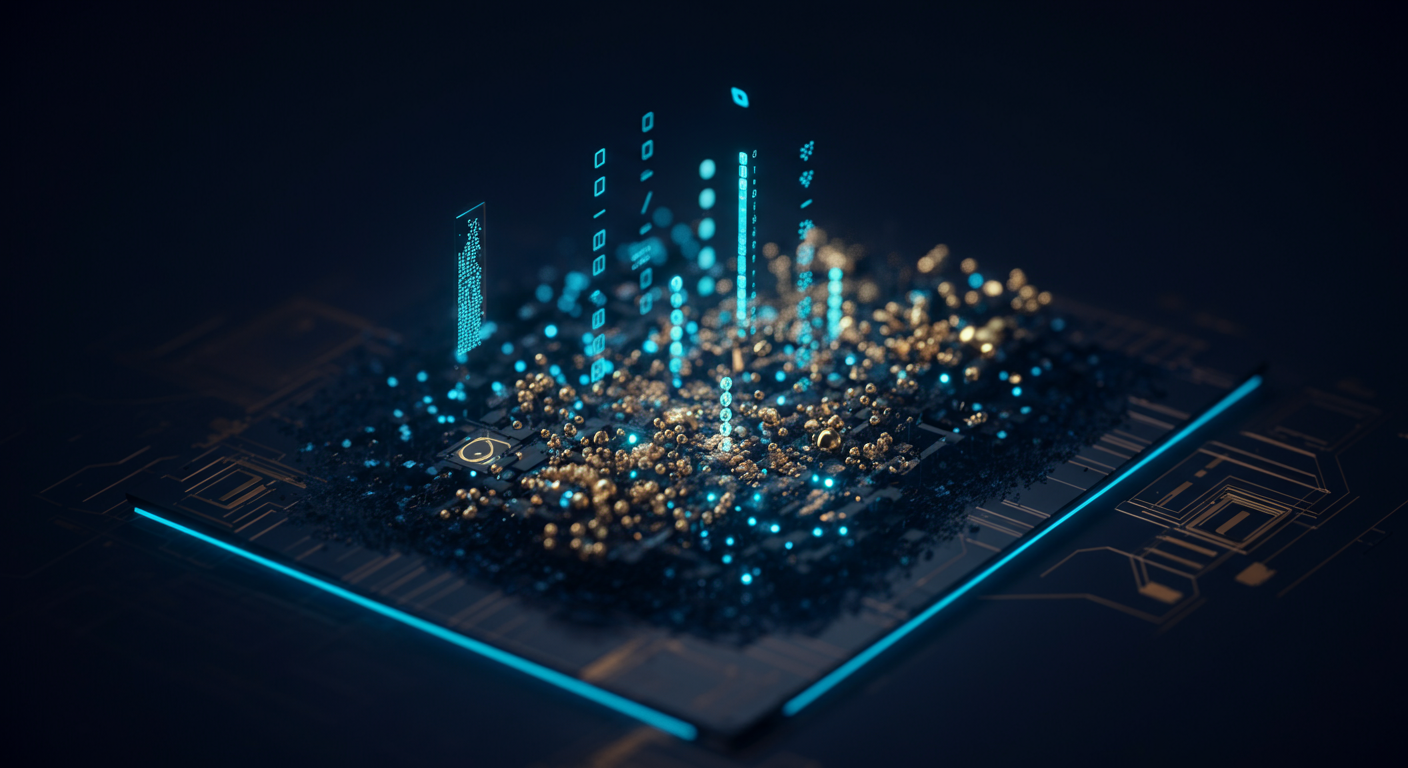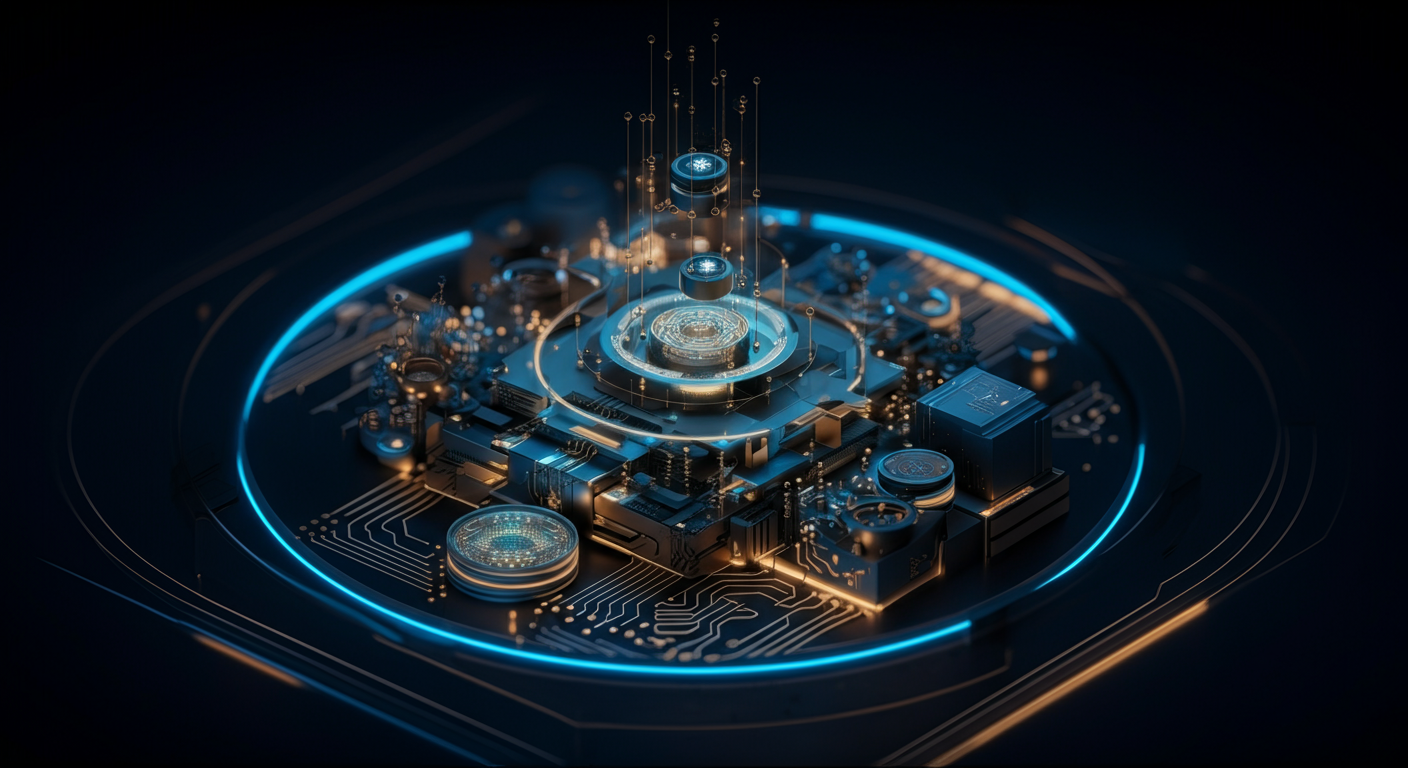Building Intelligent Swarms: A Deep Dive into Multi-Agent Reasoning with spaCy

The future of AI isn't solitary genius, but collaborative swarms.
Introduction: The Significance of Multi-Agent Systems
Multi-Agent Systems (MAS) are a paradigm shift in AI, where multiple intelligent agents interact to solve complex problems collectively. Think of it as an AI orchestra, where each instrument (AI Tool) plays its part in harmony. This approach overcomes limitations inherent in single-agent systems, which often struggle with tasks requiring diverse skill sets or vast amounts of data.
The Need for Collaborative Intelligence
Traditional, single-agent AI often hits a wall when confronted with real-world complexity.
- Limited Perspective: Single agents operate with a narrow view.
- Scalability Issues: Scaling a single agent to handle multifaceted tasks is challenging.
- Lack of Adaptability: Single agents can be inflexible in dynamic environments.
spaCy: The Natural Language Understanding Cornerstone
spaCy is a powerful, open-source library for advanced Natural Language Processing (NLP). Think of spaCy as the translator, enabling agents to understand and communicate with each other using natural language. By enabling agents to process and interpret human language, spaCy becomes critical to the collaborative reasoning process.
Core Components of an Advanced MAS
A sophisticated MAS incorporates these essential elements:
- Planning: Agents must devise strategies to achieve shared goals.
- Reflection: Critical self-assessment improves performance.
- Memory: Storing past experiences informs future decisions.
- Knowledge Graphs: Visualizing relationships between concepts enhances reasoning, similar to how different models on the AI Tools Universe are connected and related to each other.
What You'll Learn
In this article, we'll explore how to build intelligent swarms that leverage multi-agent reasoning, with spaCy at the core. We'll delve into practical implementation, discuss challenges, and glimpse the exciting possibilities of collaborative AI.
Here's your chance to harness the collective intelligence of AI swarms.
Understanding the Fundamentals: Core Components Explained

Multi-agent systems (MAS) are revolutionizing how we approach complex problem-solving by distributing tasks across a network of intelligent agents. These agents, each with specialized reasoning capabilities, collaborate to achieve goals exceeding individual capacity. Here’s a closer look at the core components powering these intelligent swarms:
- Planning: Agents must strategize to achieve their goals.
- Hierarchical Task Network (HTN) planning breaks down complex tasks into manageable sub-tasks, offering a structured approach to problem-solving.
- Monte Carlo Tree Search (MCTS) shines in uncertain environments, enabling agents to make informed decisions through simulated outcomes.
- Reflection: Critical for continuous improvement.
- Agents analyze their performance to identify weaknesses and refine strategies dynamically.
- This iterative process allows for adaptation and optimization, enabling the MAS to learn and evolve over time.
- Memory: Enables agents to leverage past experiences.
- Short-term memory handles immediate tasks.
- Long-term memory stores accumulated knowledge.
- Episodic memory records specific events and experiences.
- Knowledge Graphs: Provide a structured representation of information.
- Agents leverage these graphs to reason about relationships between entities.
- This allows for advanced inference and decision-making based on contextual understanding.
Ultimately, each component's strengths and weaknesses will impact overall efficacy, ensuring effective multi-agent reasoning for intelligent swarms.
Harnessing the power of language is crucial for intelligent agents collaborating in swarms, and spaCy offers the linguistic muscle to make it happen.
SpaCy's NLU and NLG Capabilities
spaCy is a Python library excelling at advanced Natural Language Processing. With spaCy, agents can understand human language (NLU) and generate coherent responses (NLG), making them more versatile and collaborative.Key NLP Tasks with SpaCy
SpaCy allows agents to perform critical NLP tasks, such as:- Named Entity Recognition (NER): Identifying key entities like names, organizations, and locations. Imagine an agent sifting through news articles to pinpoint relevant players in a cyber security threat, like the Multi-Agent Systems for Cyber Defense: A Proactive Revolution.
- Part-of-Speech Tagging: Assigning grammatical tags (noun, verb, adjective) to words.
- Dependency Parsing: Analyzing the grammatical structure of sentences to understand relationships between words.
Information Extraction and Structured Data
SpaCy efficiently extracts relevant information from unstructured text and converts it into structured formats ideal for reasoning. Think of agents processing customer reviews to identify key product features and sentiment.Custom SpaCy Components
You can extend spaCy's capabilities by adding custom components for specific domains. For example, you might create a custom component to understand financial jargon or medical terminology. Software Developer Tools can use spaCy to extract specific code patterns or API calls from documentation.SpaCy provides a robust and adaptable framework for equipping AI agents with sophisticated language understanding, empowering them to work together more effectively in complex scenarios.
Crafting intelligent swarms requires a deep understanding of how individual agents can reason and coordinate.
Designing the Reasoning Architecture: Integrating Planning, Reflection, Memory, and Knowledge Graphs with spaCy

Building a robust AI Reasoning Architecture with tools like spaCy, a powerful NLP library, involves several key steps. Let’s explore how to integrate planning, reflection, memory, and knowledge graphs:
- Planning with NLP: Use spaCy to parse natural language inputs, extracting relevant information to generate plans. Planning algorithms, informed by NLP insights, enable agents to generate contextually appropriate strategies.
- Reflection Mechanisms: Implement reflection by allowing agents to analyze their past actions using spaCy to understand feedback.
- Agents learn from successes and failures.
- Leveraging Memory: Utilize spaCy for memory indexing and retrieval to store past experiences and knowledge. This enables agents to access relevant information for decision-making.
- Constructing Knowledge Graphs: Employ spaCy for knowledge extraction to build and utilize knowledge graphs. These graphs represent relationships between entities, enabling agents to reason about complex scenarios.
- Knowledge graphs enhance decision-making by providing a structured understanding of the world.
Here's how to practically implement a multi-agent reasoning system, armed with Python and spaCy, a library for advanced Natural Language Processing.
Code Snippets and Examples
Let's break down how to implement key components.
- Natural Language Understanding: Use spaCy for tasks like part-of-speech tagging and entity recognition.
python
import spacy
nlp = spacy.load("en_core_web_sm")
text = "Apple is looking at buying U.K. startup for $1 billion"
doc = nlp(text)
for ent in doc.ents:
print(ent.text, ent.label_)
- Reasoning Module: This could involve rule-based systems or machine learning models, depending on complexity.
- Communication Module: Simple message passing can be implemented using Python queues or more sophisticated frameworks like message brokers.
Connecting the Modules
Here’s how to stitch it all together:
- Define Agent Classes: Each agent gets a specific role and set of responsibilities.
- Create Communication Channels: Use queues to pass information between agents.
- Orchestrate the Workflow: Design how agents interact to solve a problem.
Real-World Demonstration and Limitations
Imagine a system that identifies and validates information in a news article using a multi-agent system.
Challenges & Caveats:
- Scalability: Complex interactions can become computationally expensive.
- Bias: AI bias detection is essential. See our guide on AI Bias Detection.
It's time to supercharge your multi-agent systems, going beyond the basics to create truly intelligent swarms.
Handling the Stampede: Scaling Your Agent Army
Scaling your Multi-Agent System means being ready for a crowd; imagine managing not just a handful, but hundreds or thousands of agents simultaneously. To avoid a digital traffic jam, consider these strategies:
- Load Balancing: Distribute the workload evenly across all agents. Think of it like directing traffic on a busy highway, preventing bottlenecks.
- Parallel Processing: Utilize parallel processing to execute tasks concurrently, making your system lightning-fast.
- Asynchronous Communication: Enable agents to communicate asynchronously, so they don't have to wait for immediate responses, optimizing efficiency.
Turbocharging Performance: Algorithm Optimization
To ensure your agents aren't just numerous but also quick-witted, focus on optimizing your reasoning algorithms:
- Algorithm Selection: Carefully select algorithms based on the problem's characteristics. A brute-force approach can quickly become a computational black hole.
- Heuristics and Approximations: Employ heuristics and approximations to make quick, informed decisions without getting bogged down in exhaustive calculations.
- Caching: Implement caching mechanisms to store and reuse frequently accessed information, reducing redundant computations.
Cloud Power: Distributed Computing
Harness the power of the cloud to distribute your multi-agent system across multiple machines. Cloud platforms offer:
- Scalability: Easily scale your system up or down based on demand.
- Fault Tolerance: Build robust, fault-tolerant systems that can withstand individual machine failures.
- Cost-Effectiveness: Reduce infrastructure costs by only paying for what you need.
Level Up: Reinforcement Learning and Emergent Behavior
Ready to take your agents to the next level?
- Reinforcement Learning: Train your agents using reinforcement learning techniques, allowing them to learn from experience and adapt to changing environments.
- Emergent Behavior: Design your system to encourage Emergent Behavior in AI, where complex behaviors arise from the interactions of simple agents.
Harnessing multi-agent systems allows us to tackle complex real-world problems by distributing intelligence.
Supply Chain Optimization
Multi-agent reasoning is revolutionizing supply chain management.- Each agent could represent a different entity in the supply chain (supplier, manufacturer, distributor, retailer).
- Utilizing natural language understanding through libraries like spaCy enables agents to communicate and negotiate effectively.
- Benefits include reduced costs, improved delivery times, and increased responsiveness to disruptions.
Fraud Detection
AI is detecting fraud with greater accuracy.- Each agent can monitor different aspects of transactions, such as user behavior, transaction history, and location data.
- SpaCy assists in analyzing textual data from reports, identifying patterns, and flagging suspicious activities.
- This provides real-time detection, minimizing financial losses and safeguarding sensitive information.
Robotic Swarms
Coordinating robots becomes effortless with multi-agent systems.- Individual robots operate as agents, performing specific tasks and coordinating with others to achieve a common objective.
- Natural language processing enhances human-robot interaction and allows for complex task delegation.
- Applications range from warehouse automation to search-and-rescue operations.
Enhanced Customer Service
Multi-agent systems are redefining customer interaction.- AI agents can understand customer queries, access relevant information, and provide personalized assistance.
- SpaCy enables the system to better understand the nuances of customer language, leading to improved service quality and customer satisfaction.
- LimeChat, for instance, is a customer support AI tool that can be integrated with various platforms to provide automated customer service.
Harnessing multi-agent reasoning will revolutionize AI, creating collaborative systems that exceed the capabilities of single agents.
Emerging Trends in Multi-Agent Systems (MAS)
- Decentralized Learning: MAS are moving towards decentralized learning paradigms, allowing agents to learn and adapt without relying on a central controller. This enhances robustness and scalability.
- Explainable MAS: As MAS become more complex, explainability is crucial. New methods aim to make the reasoning processes of collaborative agents transparent and understandable, fostering trust and accountability.
- Hybrid Architectures: Combining different types of agents (e.g., rule-based, neural network-based) in hybrid architectures allows for more flexible and efficient problem-solving. For instance, ChatGPT demonstrates the power of combining different AI approaches.
Predictions for Collaborative AI's Impact
Collaborative AI will transform industries, enabling more efficient resource management, automated decision-making, and enhanced productivity. Think of smart cities coordinating traffic flow or supply chains optimizing logistics in real-time.
- Widespread Automation: Collaborative AI will drive automation across various sectors, reducing human intervention in routine tasks and improving overall efficiency.
- Improved Decision-Making: By leveraging the collective intelligence of multiple agents, MAS can provide more accurate and informed decisions, particularly in complex and uncertain environments.
- Enhanced Creativity: Design AI Tools can collaborate to generate novel ideas and solutions, pushing the boundaries of creativity and innovation.
Ethical Considerations
- Bias and Fairness: Ensuring fairness in MAS requires careful attention to potential biases in agent design and training data. Algorithmic bias detection and mitigation are critical. Discover more in the AI Bias Detection: A Practical Guide to Building Fair and Ethical AI.
- Accountability: Defining accountability in collaborative systems is essential. Establishing clear lines of responsibility can prevent unintended consequences and promote ethical behavior.
- Data Privacy: Protecting data privacy is crucial, especially when dealing with sensitive information. Implementing privacy-preserving techniques such as differential privacy can help mitigate risks.
It’s clear: collaborative intelligence is no longer a futuristic concept but a tangible tool for today’s challenges.
Key Takeaways
This exploration of multi-agent reasoning with spaCy provides a foundational understanding of how collaborative intelligence works and its potential impact. We covered:- The architecture of multi-agent systems
- The application of spaCy for natural language understanding
- Reasoning and decision-making processes within these systems.
The Power of Collaboration
Multi-agent systems, leveraging frameworks like spaCy, offer a powerful approach to tackling problems that are beyond the scope of single AI agents. The capacity for coordinated reasoning opens doors for innovation in numerous fields from cybersecurity (see Multi-Agent Systems for Cyber Defense: A Proactive Revolution) to data integration (check out Mastering Multi-Agent Systems for Omics Data Integration: A Comprehensive Guide to Pathway Reasoning).Explore Further
The field of collaborative AI is rapidly evolving. I encourage you to:- Experiment with building your own multi-agent systems with spaCy.
- Explore additional resources for Further AI Resources.
- Delve into research papers on multi-agent reasoning and decision-making.
Keywords
Multi-Agent Systems, spaCy, Natural Language Understanding, AI Reasoning, Knowledge Graphs, AI Planning, Agent Reflection, AI Memory, Collaborative AI, Python, AI Architecture, AI Implementation, AI Applications, AI Trends, AI Ethics
Hashtags
#MultiAgentSystems #SpaCyNLP #AIReasoning #KnowledgeGraphs #CollaborativeAI
Recommended AI tools

Your AI assistant for conversation, research, and productivity—now with apps and advanced voice features.

Bring your ideas to life: create realistic videos from text, images, or video with AI-powered Sora.

Your everyday Google AI assistant for creativity, research, and productivity

Accurate answers, powered by AI.

Open-weight, efficient AI models for advanced reasoning and research.

Generate on-brand AI images from text, sketches, or photos—fast, realistic, and ready for commercial use.
About the Author

Written by
Dr. William Bobos
Dr. William Bobos (known as 'Dr. Bob') is a long-time AI expert focused on practical evaluations of AI tools and frameworks. He frequently tests new releases, reads academic papers, and tracks industry news to translate breakthroughs into real-world use. At Best AI Tools, he curates clear, actionable insights for builders, researchers, and decision-makers.
More from Dr.

